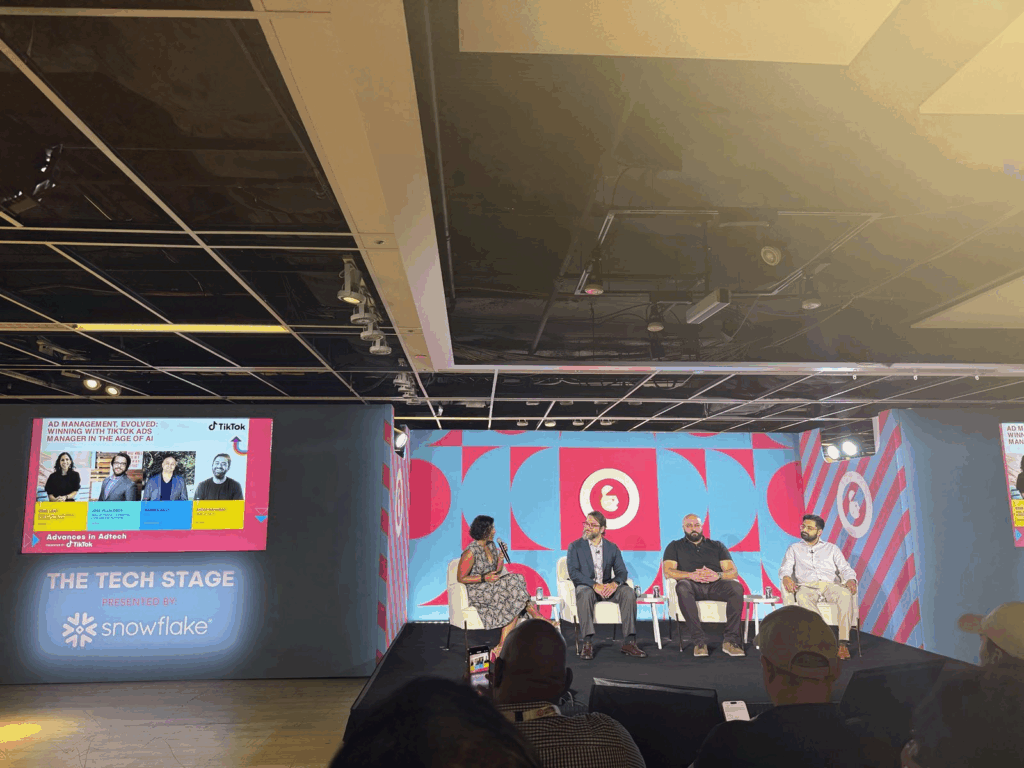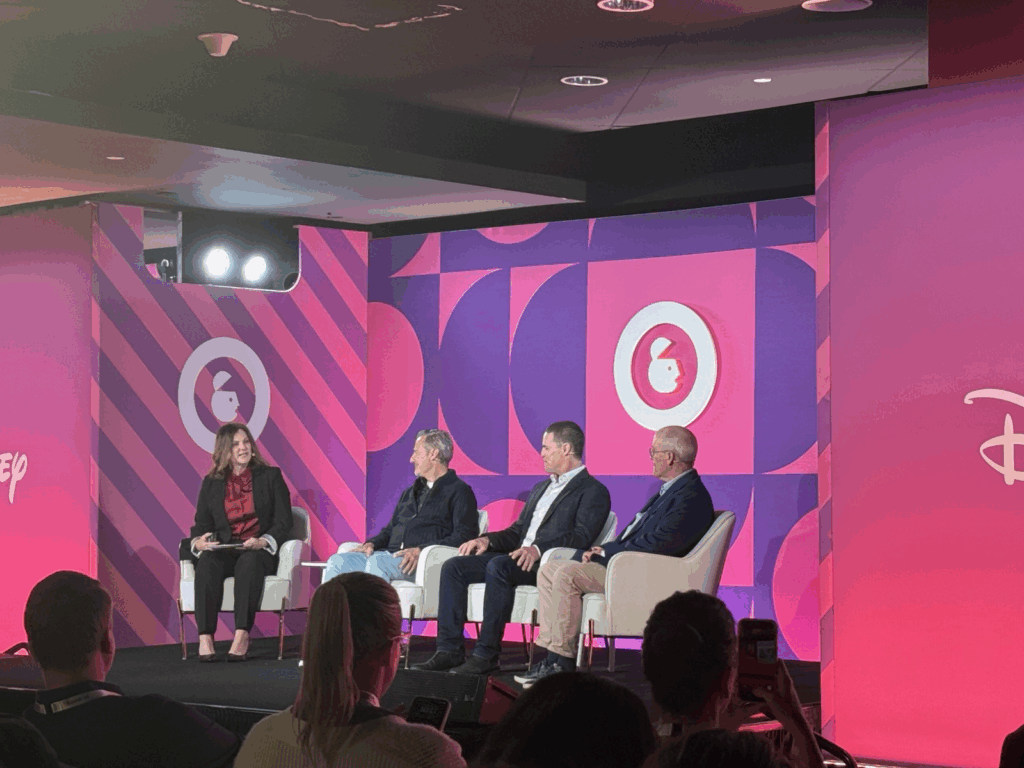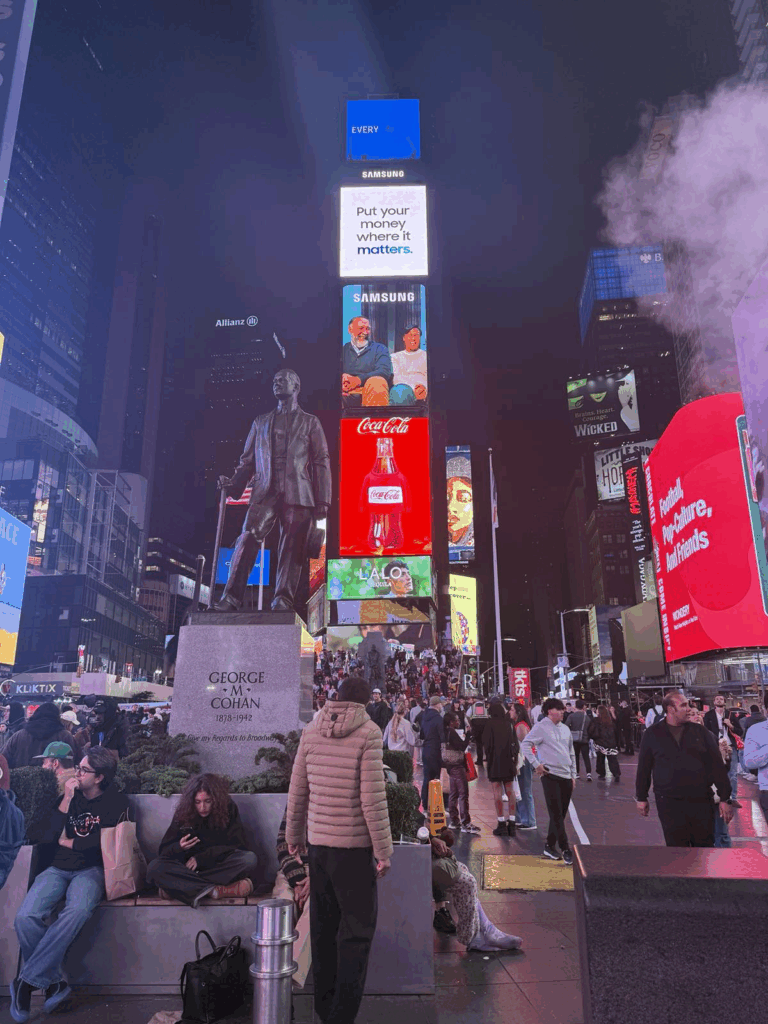Turning Innovation into Impact: Four Trends Defining Marketing at Advertising Week New York 2025(Part 2)
🔙 Missed the beginning? Start with Part 1→ Turning Innovation into Impact: Four Trends Defining Marketing at Advertising Week New York 2025(Part 2)
- Theme 3 — Social Search Becomes the New Discovery Engine
- Theme 4 — Measurement Modernizes: From Clicks to Causality
- Conclusion — Marketing in the Age of Intelligent Acceleration
Theme 3 — Social Search Becomes the New Discovery Engine

(From left: Esme Lean, Head of Small and Medium Business, Americas, TikTok; Jose Villalobos, Head of Product Marketing, Core Ads and Platform, TikTok; Warren Jolly, CEO, adQuadrant; and Areeb Mahamadi, Head of Digital, WITHIN)
On the Tech & B2BMX stage, speakers from TikTok and LinkedIn described how search is undergoing its biggest shift in decades — moving from functional query-and-answer systems to experience-driven discovery shaped by human perspectives and trusted networks.
As one TikTok executive put it,
“This isn’t a trend — this is how search is evolving today.”
The data supports that claim. 86% of Gen Z users search on TikTok every week, and search volume on the platform is up 40% year over year.
Over half of users say they use TikTok to inform purchase decisions, and 84% of those searches happen mid-funnel — during the exploration and evaluation phase.
When brands run Search Ads, purchase lift is 2× higher than standard in-feed campaigns, as shown in Aerie’s 3% conversion lift case study.
Panelists explained that users no longer seek “answers” — they seek perspectives.
As TikTok executive noted, “People find value not just in influencers, but in everyday, organic voices that complete their discovery journey.”
LinkedIn’s Alex Josephson added that for B2B buyers, video content and creator voices are now decisive early in the funnel.
“More than 90% of B2B marketers say video delivers the highest ROI.
Buyers make their final decision from their Day One List — usually 2.6 companies or fewer.”
That Day One List carries enormous weight: over 90% of B2B buyers end up choosing a vendor already on it.
LinkedIn’s Brand Link program showed that exposure to creator-led video increased lead conversion rates by 18%.
IBM’s Joe Prota summarized the behavioral shift:
“You want to stay present and consistent with your audience — so when they move to buy, you’re the first call they make.”
Ultimately, social platforms like TikTok and LinkedIn are redefining discovery itself — turning search from a utility into a cultural and emotional experience.
Consumers no longer just search for information; they discover through people, context, and authenticity.
Theme 4 — Measurement Modernizes: From Clicks to Causality

(From left: Dana McGraw, Senior Vice President, Data and Measurement Science, Disney Advertising; Drew Panayiotou, Chief Marketing Officer, Keurig Dr Pepper; Kevin Krim, President and CEO, EDO; and Paul Ballew, Chief Data and Analytics Officer, NFL)
The stages involved in Measurement & Analytics, industry leaders from Disney, EDO, and Snap addressed the measurement crisis reshaping marketing.
The deprecation of cookies, tightening privacy regulations, and fragmented data silos have exposed fundamental gaps in user-level attribution — forcing marketers to rethink what true impact means.
Chris Flexner (Snap.Inc) explained,
“We’ve seen a major shift. User-level attribution simply has inherent gaps.
With cookies disappearing and privacy changes causing confusion, isolated solutions can mislead business outcomes.
The real conversation now is about reaching incrementality and true business impact.”
That shift is redefining how performance is measured.
Traditional KPIs — clicks, conversions, last-touch metrics — no longer suffice.
In fact, 60–80% of searches today end in zero-click interactions, meaning engagement is happening off-platform or in closed ecosystems.
Alex Green (Peacock) outlined the operational challenge: while MMM and MTA remain critical, the 60–90-day lag in reporting renders them too slow for today’s fast-moving markets.
“In streaming, performance can change by the hour.
Waiting three months for a model update simply doesn’t work.”
Green’s team has instead focused on lift tests, geo-experiments, and causal inference to prove incremental growth in near real time.
Once leadership saw that marketing experiments drove measurable subscriber gains, buy-in was immediate.
“When you can show incremental subscribers, the business case sells itself.”
Panelists also emphasized that ROI depends as much on creative as on channel strategy — with roughly 60% of ROI attributed to messaging and creative quality, versus 40% to media execution and targeting.
As Drew Panayiotou (EDO) noted,
“Marketing drives people into the funnel, but sales depend on everything from inventory and pricing to competition and weather.”
AI and automation are starting to fill the speed gap.
Companies are investing heavily — AI infrastructure now represents about 2% of U.S. GDP, and has already generated an estimated $4 billion in incremental revenue across social platforms through improved measurement and optimization.
Yet speakers agreed that tools alone aren’t enough.
Organizations must establish a shared North Star — a unified definition of success across data, marketing, and finance teams.
As Snap executive concluded,
“This challenge will be solved — it has to be.
Measurement is too essential to modern marketing to remain fragmented.”
The verdict from New York was clear:
Measurement is evolving from tracking clicks to proving causality,
anchoring marketing not in vanity metrics, but in verifiable business growth.
Conclusion — Marketing in the Age of Intelligent Acceleration
Reflecting on this year’s Advertising Week New York 2025, I was struck by how completely AI has moved from theory to infrastructure.
Every conversation — whether about creative automation, commerce media, social discovery, or measurement — pointed to one reality:
AI is no longer assisting marketing; it is powering it.
Yet amid the enthusiasm, a deeper truth emerged.
AI and automation can make us faster, but human intelligence and ethical data practices are what make marketing meaningful.
As privacy regulations tighten and third-party cookies fade away, marketers face a paradox — more data than ever, but less clarity about how to connect it.
Speakers repeatedly returned to the same challenge: breaking down data silos, establishing trust-based collaboration, and measuring causality, not clicks.
Those conversations strongly resonated with me because they reflect the very space where Ayudante operates.
We have always believed that better measurement unlocks better marketing, and this year’s discussions reaffirmed that conviction.
The ability to structure, analyze, and activate data responsibly — across fragmented ecosystems and evolving privacy frameworks — is becoming the core competitive advantage for every brand.
At Ayudante, we see our role as helping clients turn AI data into actionable insight — not just collecting signals, but building the frameworks that give those signals meaning.
In a world where automation is abundant but trust is scarce, that mission feels more essential than ever.
Leaving AWNY 2025, I was reminded that the future of marketing will not be defined by algorithms alone.
It will be defined by how we measure, interpret, and humanize them.


ーLooking out over Manhattan’s skyline at night, I felt the city’s energy flow through me — its lights, its rhythm, its unstoppable spirit. New York never just inspires; it recharges you.ー

